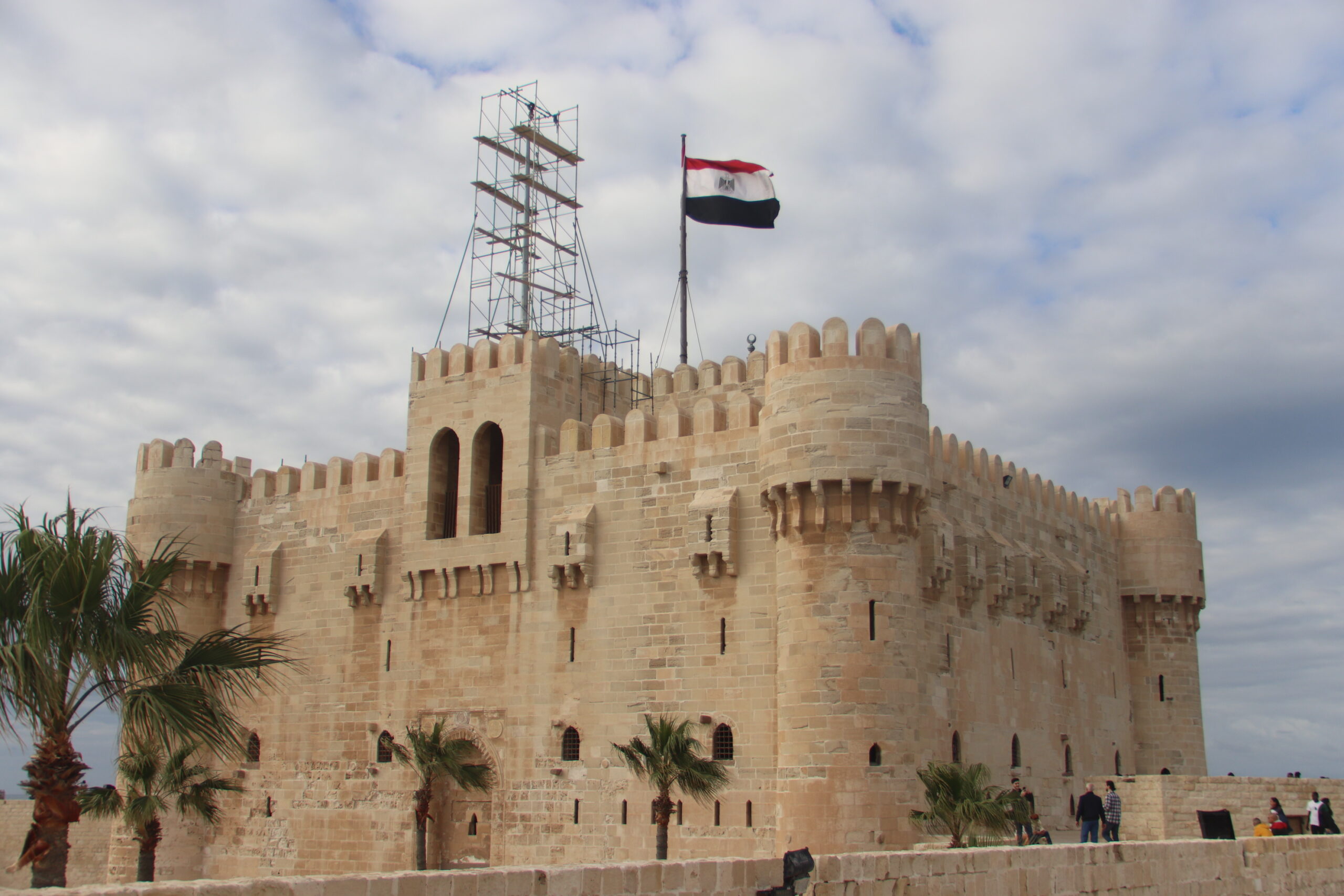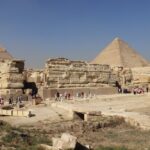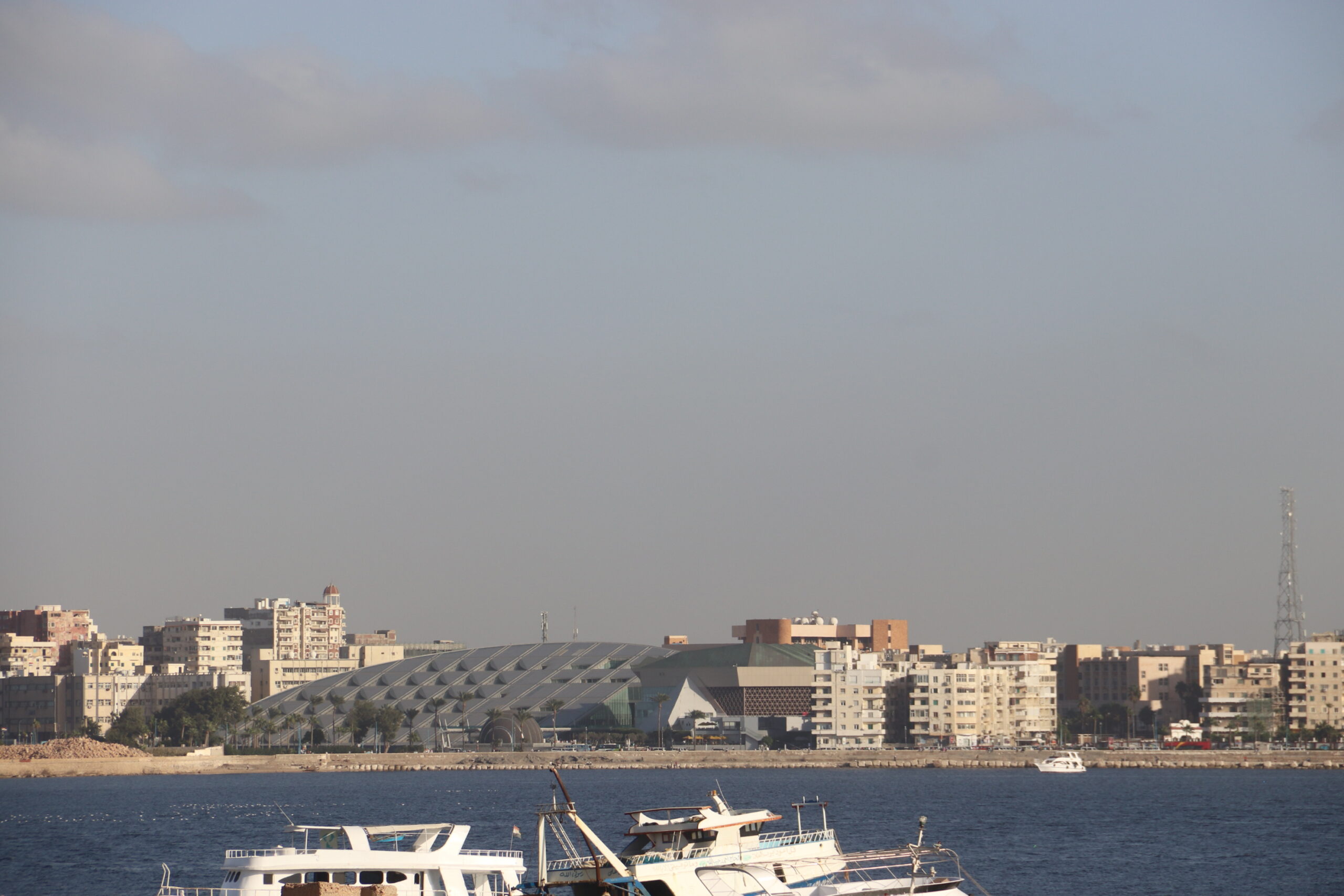
Alexandria is considered one of the most important cities in Egypt. It had its foundation well documented. Alexander the Great was only twenty-five years old when he came to Egypt in 332 B.C. Arrian was one of the historians who wrote about the foundation of the city in his book The Anabasis of Alexander.
Upon arrival at the location of the City and according to Arrian, the historian, Alexander believed that the position was perfect for building a city and had a strong feeling that it would be prosperous. He drew the boundaries of the city and planned the construction of the agora and temples. He even specified how many temples there should be and which Greek gods they should be dedicated to. He went as far as to reserve a place for a temple dedicated to the Egyptian goddess Isis and made sure to mark where the wall was to be built around the city. Sacrifices were offered, and the signs indicated that things were favorable.
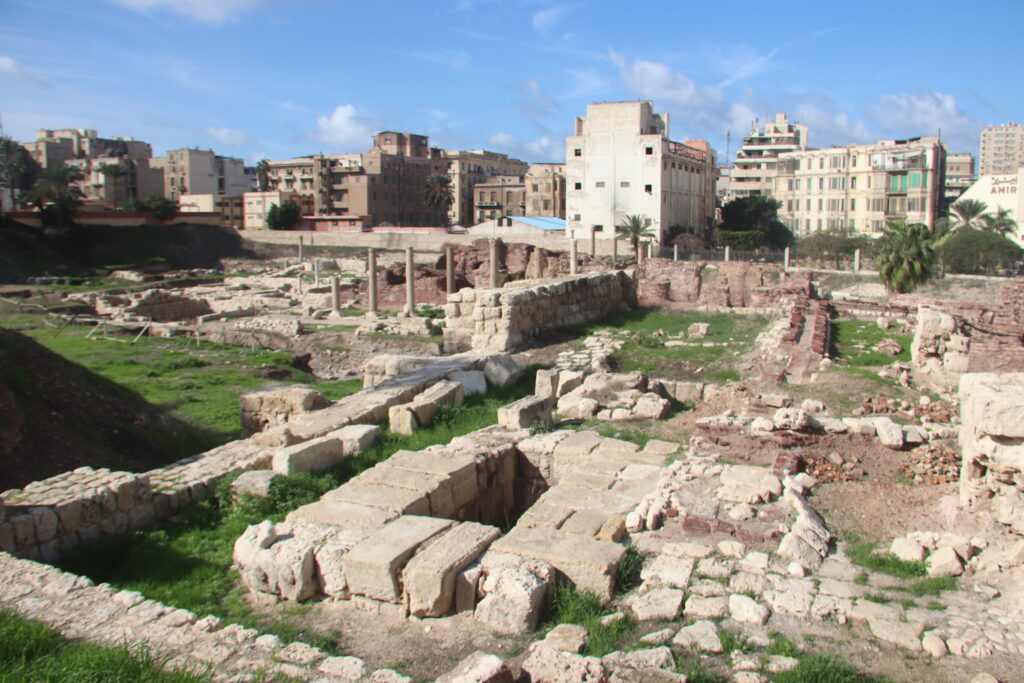
THE SERAPEUM: “The Great Temple of Serapis in Alexandria.
“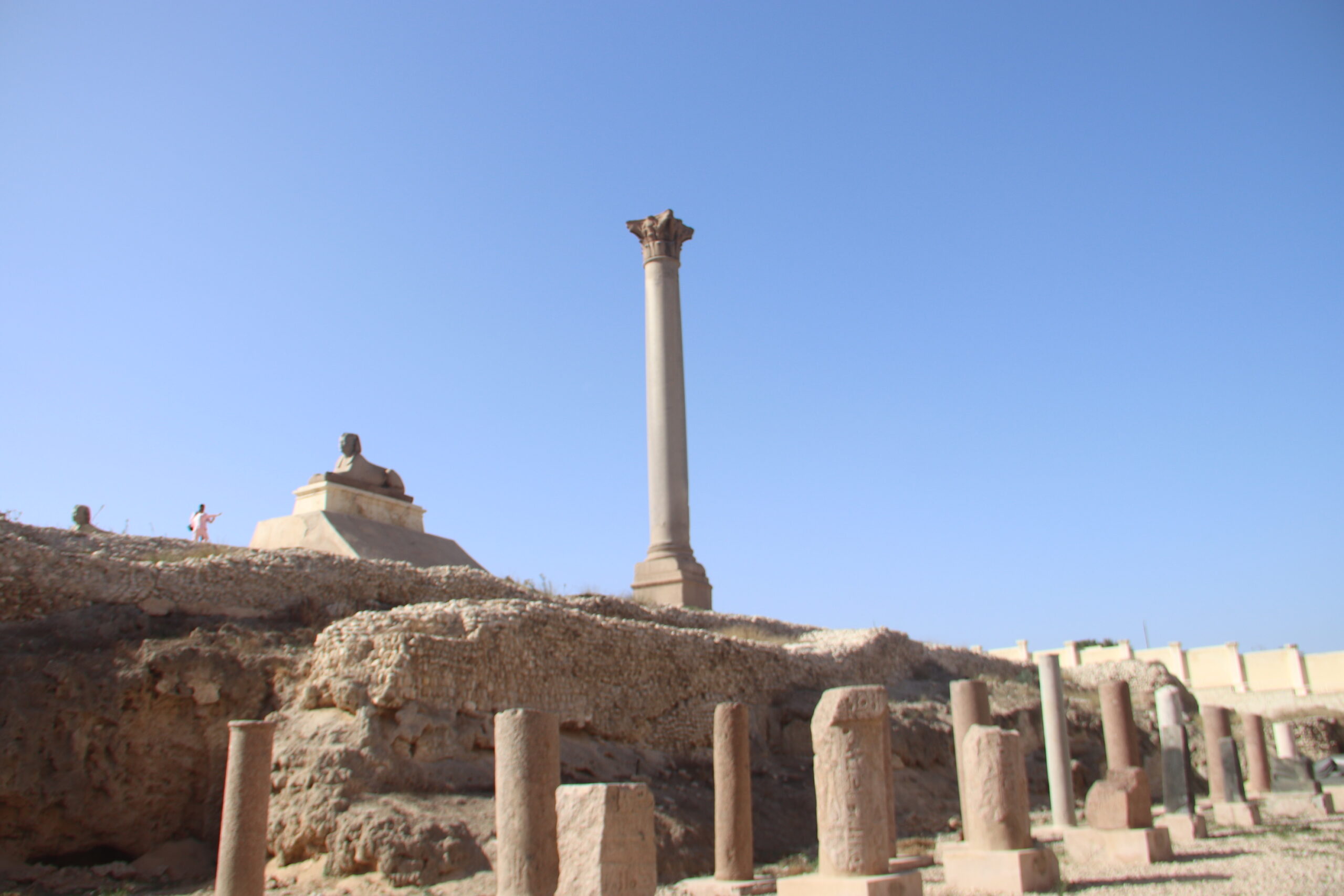
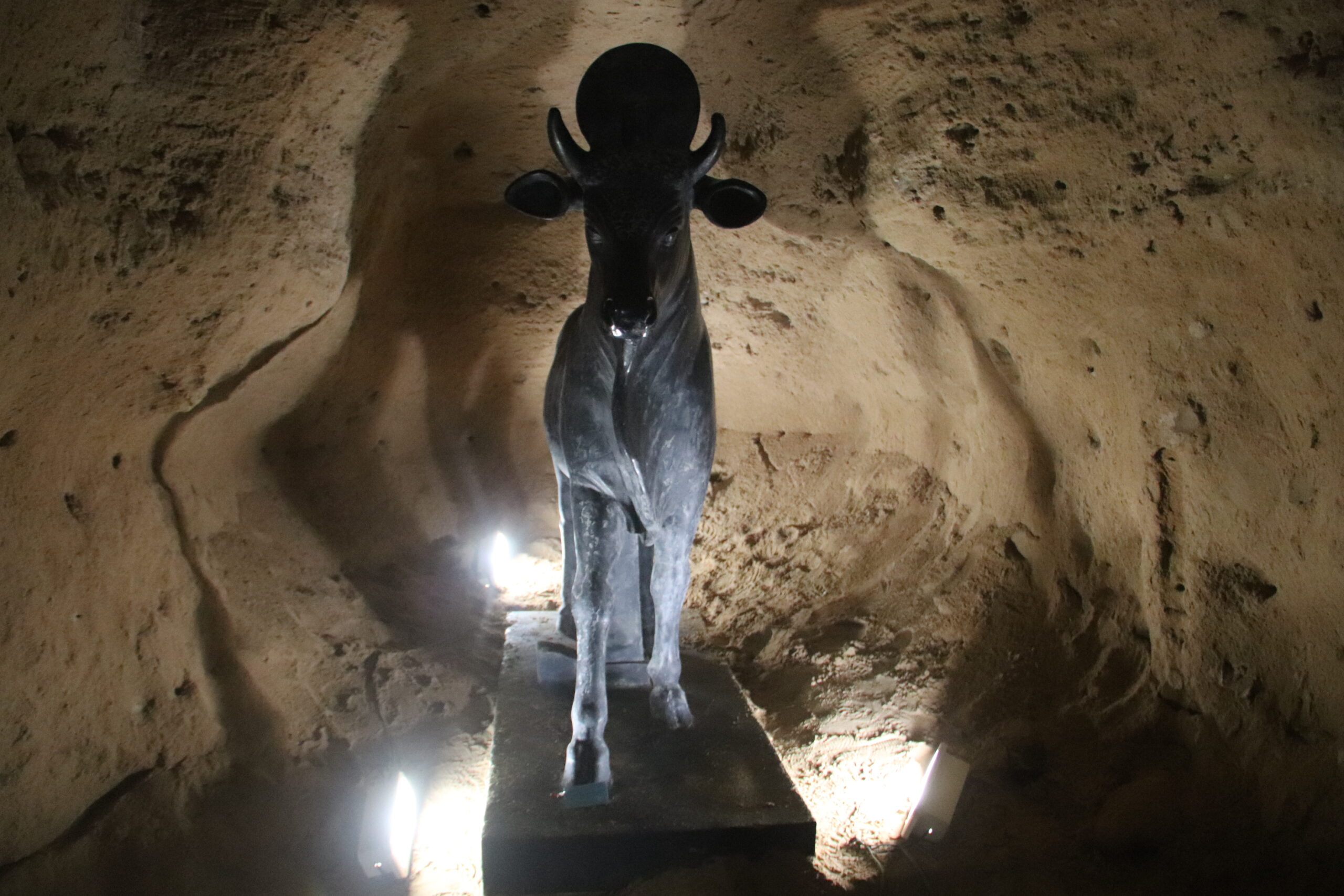
The Serapeum – a fascinating temple in Alexandria that was dedicated to the god Serapis. The temple was a popular destination for people seeking healing or fertility blessings, and it’s interesting to think about the different beliefs and practices of that time. Our guide will take you through the history, architecture, and other details of the Serapeum, and help you understand the significance of this important site. Dedicated to the god Serapis, this magnificent temple was a popular destination for pilgrims and tourists from all over the world. Experience the awe-inspiring healing powers that drew people seeking cures for their ailments, or witness the fertility rites that brought many couples to pray for children.
HISTORY
When Ptolemy Soter with great political acumen, took over Egypt after the death of Alexander the Great, he continued the construction of the Serapeum, which was completed during the reign of his son, Ptolemy Philadelphus. The temple was built on the orders of Alexander the Great, who intended it to be a symbol of the fusion between Greek and Egyptian culture. It was designed by the architect Deinocrates and was one of the largest and most impressive temples in the ancient world, its ruins still attract many visitors today.
It’s unfortunate to hear about the closure of the Serapeum and the destruction of its treasures. The incident highlights the negative impact of religious intolerance and the dangers of imposing one’s beliefs on others. The loss of the Serapeum was a significant setback for the advancement of knowledge and culture. A place that started with the idea of religious tolerance between the indigenous Egyptians and the Greek immigrants was ultimately destroyed and closed due to intolerance after serving for about 700 years. It’s a reminder of the importance of accepting and respecting each other’s beliefs and cultures.

